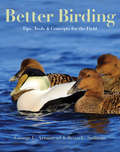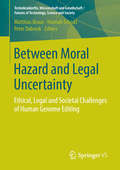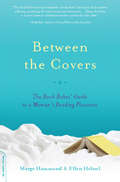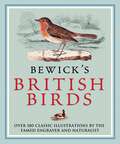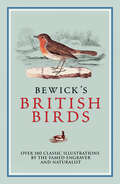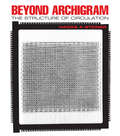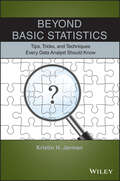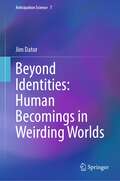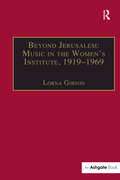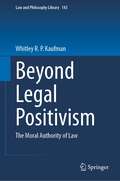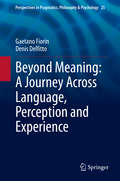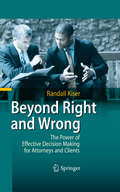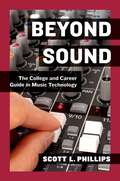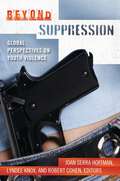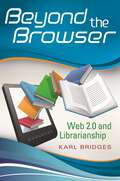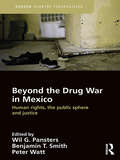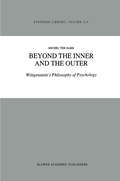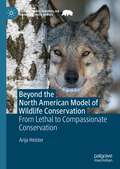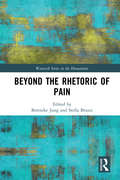- Table View
- List View
Better Birding: Tips, Tools, and Concepts for the Field (PDF)
by George L. Armistead Brian L. SullivanBetter Birding reveals the techniques expert birders use to identify a wide array of bird species in the field—quickly and easily. Featuring hundreds of stunning photos and composite plates throughout, this book simplifies identification by organizing the birds you see into groupings and offering strategies specifically tailored to each group. Skill building focuses not just on traditional elements such as plumage, but also on creating a context around each bird, including habitat, behavior, and taxonomy—parts so integral to every bird's identity but often glossed over by typical field guides. Critical background information is provided for each group, enabling you to approach bird identification with a wide-angle view, using your eyes, brain, and binoculars more strategically, resulting in a more organized approach to learning birds.Better Birding puts the thrill of expert bird identification within your reach.Reveals the techniques used by expert birders for quick and easy identificationSimplifies identification with strategies tailored to different groupings of birdsFeatures hundreds of photos and composite plates that illustrate the different techniquesFosters a wide-angle approach to field birdingProvides a foundation for building stronger birding skills
Between Moral Hazard and Legal Uncertainty: Ethical, Legal and Societal Challenges of Human Genome Editing (Technikzukünfte, Wissenschaft und Gesellschaft / Futures of Technology, Science and Society)
by Matthias Braun Hannah Schickl Peter DabrockGenome Editing Techniques are seen to be at the frontier of current research in the field of emerging biotechnologies. The latest revolutionary development, the so-called CRISPR technology, represents a paradigmatic example of the ambiguity of such techniques and has resulted in an international interdisciplinary debate on whether or not it is necessary to ban the application of this technique by means of a moratorium on its use for human germline modifications, particularly in human embryos in the reproduction process. However, given that other germline engineering techniques like mitochondrial (mt) DNA transfer techniques are already permitted and applied, the question arises what lies at the root of the apparent social unease about the modification of the human germline by Genome Editing Techniques like CRISPR. Against this background, the book seeks to make a substantial contribution to the current debate about a responsible and participatory framework for research on emerging biotechnologies by analysing underlying perceptions, attitudes, arguments and the reasoning on Genome Editing Techniques.
Between the Covers: The Book Babes' Guide to a Woman's Reading Pleasures
by Ellen Heltzel Margo HammondWith wit and wisdom, the bibliophile's Ebert & Roeper recommend more than 600 books based on what women care about most. Between the Covers is organized around their wide-ranging curiosity-about themselves, friends and family, the larger world-and their concerns, from health to sex to managing their finances. With such sections as "Babes We Love” (Role Models Real and Imagined), "The Babe Inside” (Focusing on Body and Soul), and "Love, Sex & Second Chances,” this unique collection of fiction and nonfiction reflects how women really read.
Bewick’s British Birds
by Thomas BewickWith Bewick on my knee, I was then happy...' Jane EyreCharlotte Bronte's heroine was not alone in her enjoyment of Thomas Bewick's British Birds - since its first publication in 1797 it has become one of the best-loved classics of natural history. Bewick's masterful woodcuts are more than scientific records; each beady eye and jaunty pose betrays the artist's love of birds.This edition includes over 180 bird species, from garden favourites such as robins, blackbirds and finches, to predators such as the osprey and the majestic golden eagle. Each entry is illustrated with an engraving, and throughout the book are narrative vignettes typical of Bewick's playful, engaging style.
Bewick's British Birds: Over 180 Classic Illustrations by the Famed Engraver and Naturalist
by Thomas BewickWith Bewick on my knee, I was then happy...' Jane EyreCharlotte Bronte's heroine was not alone in her enjoyment of Thomas Bewick's British Birds - since its first publication in 1797 it has become one of the best-loved classics of natural history. Bewick's masterful woodcuts are more than scientific records; each beady eye and jaunty pose betrays the artist's love of birds.This edition includes over 180 bird species, from garden favourites such as robins, blackbirds and finches, to predators such as the osprey and the majestic golden eagle. Each entry is illustrated with an engraving, and throughout the book are narrative vignettes typical of Bewick's playful, engaging style.
Beyond Archigram: The Structure of Circulation
by Hadas A. SteinerBeyond Archigram is the first study of the prehistory of digital representation to focus on the magazine Archigram, the magazine published in London irregularly between 1961 and 1970 and the name of the group that created it. Archigram is among the most significant phenomena to emerge in post-war architectural culture. The wired environments first advertised on its pages formulated an architectural vocabulary of metamorphosis and obsolescence that cross-pollinated industrial and digital technology at the same time as complex systems were becoming commercially available. Through archival, theoretical and visual analysis, Hadas Steiner explores the process through which this model was envisaged and disseminated within an international network of practitioners and shows how the assimilation of Archigram imagery set the course for the visual output of what are now commonplace tools in architectural practice. This book will provide a foundation for further inquiry into the integration of digital technology at every level of design.
Beyond Archigram: The Structure of Circulation
by Hadas A. SteinerBeyond Archigram is the first study of the prehistory of digital representation to focus on the magazine Archigram, the magazine published in London irregularly between 1961 and 1970 and the name of the group that created it. Archigram is among the most significant phenomena to emerge in post-war architectural culture. The wired environments first advertised on its pages formulated an architectural vocabulary of metamorphosis and obsolescence that cross-pollinated industrial and digital technology at the same time as complex systems were becoming commercially available. Through archival, theoretical and visual analysis, Hadas Steiner explores the process through which this model was envisaged and disseminated within an international network of practitioners and shows how the assimilation of Archigram imagery set the course for the visual output of what are now commonplace tools in architectural practice. This book will provide a foundation for further inquiry into the integration of digital technology at every level of design.
Beyond Basic Statistics: Tips, Tricks, and Techniques Every Data Analyst Should Know
by Kristin H. JarmanFeatures basic statistical concepts as a tool for thinking critically, wading through large quantities of information, and answering practical, everyday questions Written in an engaging and inviting manner, Beyond Basic Statistics: Tips, Tricks, and Techniques Every Data Analyst Should Know presents the more subjective side of statistics—the art of data analytics. Each chapter explores a different question using fun, common sense examples that illustrate the concepts, methods, and applications of statistical techniques. Without going into the specifics of theorems, propositions, or formulas, the book effectively demonstrates statistics as a useful problem-solving tool. In addition, the author demonstrates how statistics is a tool for thinking critically, wading through large volumes of information, and answering life’s important questions. Beyond Basic Statistics: Tips, Tricks, and Techniques Every Data Analyst Should Know also features: Plentiful examples throughout aimed to strengthen readers’ understanding of the statistical concepts and methods A step-by-step approach to elementary statistical topics such as sampling, hypothesis tests, outlier detection, normality tests, robust statistics, and multiple regression A case study in each chapter that illustrates the use of the presented techniques Highlights of well-known shortcomings that can lead to false conclusions An introduction to advanced techniques such as validation and bootstrapping Featuring examples that are engaging and non-application specific, the book appeals to a broad audience of students and professionals alike, specifically students of undergraduate statistics, managers, medical professionals, and anyone who has to make decisions based on raw data or compiled results.
Beyond Basic Statistics: Tips, Tricks, and Techniques Every Data Analyst Should Know
by Kristin H. JarmanFeatures basic statistical concepts as a tool for thinking critically, wading through large quantities of information, and answering practical, everyday questions Written in an engaging and inviting manner, Beyond Basic Statistics: Tips, Tricks, and Techniques Every Data Analyst Should Know presents the more subjective side of statistics—the art of data analytics. Each chapter explores a different question using fun, common sense examples that illustrate the concepts, methods, and applications of statistical techniques. Without going into the specifics of theorems, propositions, or formulas, the book effectively demonstrates statistics as a useful problem-solving tool. In addition, the author demonstrates how statistics is a tool for thinking critically, wading through large volumes of information, and answering life’s important questions. Beyond Basic Statistics: Tips, Tricks, and Techniques Every Data Analyst Should Know also features: Plentiful examples throughout aimed to strengthen readers’ understanding of the statistical concepts and methods A step-by-step approach to elementary statistical topics such as sampling, hypothesis tests, outlier detection, normality tests, robust statistics, and multiple regression A case study in each chapter that illustrates the use of the presented techniques Highlights of well-known shortcomings that can lead to false conclusions An introduction to advanced techniques such as validation and bootstrapping Featuring examples that are engaging and non-application specific, the book appeals to a broad audience of students and professionals alike, specifically students of undergraduate statistics, managers, medical professionals, and anyone who has to make decisions based on raw data or compiled results.
Beyond Identities: Human Becomings in Weirding Worlds (Anticipation Science #7)
by Jim DatorThis book is an argument for moving beyond culturally/historically/ethnically/biologically-grounded identity as the necessary foundation of an authentic self. It highlights examples of people who are attempting to inhabit identities they feel are more appropriate to themselves, by deploring the damage done via claims about authentic identity. The sole theme of this book is “becoming beyond identity”. We are not fixed human beings but rather perpetually-dynamic human becomings. As intelligence is enabled or recognized beyond the merely human, we should welcome our continuing evolution from homosapiens, sapiens, into many varieties of intelligences on Earth and the cosmos. This book builds from tiny ripples into a tsunami of examples from conventional identity studies, to Confucian human becomings, to apotemnophilia, to DIY biohacking, to cyborgs, to artilects, to hiveminds, to intelligence in animals, plants and fungi from the Holocene through the beginnings of the precarious, climate change-driven Anthropocene Epoch, with hints far beyond and throughout the cosmos. From a lifetime of work in future studies, anticipation science and space studies, the author balances frank tales of his own experiences and beliefs concerning his uncertain and fluid identities with those of others who tell their stories. In addition to material from academic and popular sources, a few poems further illuminate the scene.
Beyond Jerusalem: Music in the Women's Institute, 1919-1969
by Lorna GibsonMusic in the Women's Institute has become stereotyped by the ritualistic singing of Jerusalem at monthly meetings. Indeed, Jerusalem has had an important role within the organization, and provides a valuable means within which to assess the organization's relationship with women's suffrage and the importance of rurality in the Women's Institute's identity. However, this book looks beyond Jerusalem by examining the full range of music making within the organization and locates its significance within a wider historical-cultural context. The Institute's promotion of conducting - a regular part of its musical activity since the 1930s - is discussed within the context of embodying overtly feminist sentiments. Lorna Gibson concludes that a redefinition of the term 'feminism' is needed and the concept of 'gendered spheres' of conducting provides a useful means of understanding the Institute's policy. The organization's promotion of folk song is also examined and reveals the Institute's contribution to the Folk Revival, as well as providing a valuable context within which to understand the National Federation's first music commission, Ralph Vaughan Williams's Folk Songs of the Four Seasons (1950). This work, and the Institute's second commission, Malcolm Williamson's The Brilliant and the Dark (1969), are examined with the context of the organization's music policy. In addition to discussing the background to the works, issues of critical reception are addressed. The book concludes with an Epilogue about the National Society Choir (later known as the Avalon Singers), which tested the organization's commitment to amateur music making. The book is the result of meticulous work undertaken in the archives of the National Federation, the BBC Written Archives Centre, the V&A archives, the Britten-Pears Library, the Ralph Vaughan Williams Library, the Women's Library and the Newspaper Library.
Beyond Jerusalem: Music in the Women's Institute, 1919-1969
by Lorna GibsonMusic in the Women's Institute has become stereotyped by the ritualistic singing of Jerusalem at monthly meetings. Indeed, Jerusalem has had an important role within the organization, and provides a valuable means within which to assess the organization's relationship with women's suffrage and the importance of rurality in the Women's Institute's identity. However, this book looks beyond Jerusalem by examining the full range of music making within the organization and locates its significance within a wider historical-cultural context. The Institute's promotion of conducting - a regular part of its musical activity since the 1930s - is discussed within the context of embodying overtly feminist sentiments. Lorna Gibson concludes that a redefinition of the term 'feminism' is needed and the concept of 'gendered spheres' of conducting provides a useful means of understanding the Institute's policy. The organization's promotion of folk song is also examined and reveals the Institute's contribution to the Folk Revival, as well as providing a valuable context within which to understand the National Federation's first music commission, Ralph Vaughan Williams's Folk Songs of the Four Seasons (1950). This work, and the Institute's second commission, Malcolm Williamson's The Brilliant and the Dark (1969), are examined with the context of the organization's music policy. In addition to discussing the background to the works, issues of critical reception are addressed. The book concludes with an Epilogue about the National Society Choir (later known as the Avalon Singers), which tested the organization's commitment to amateur music making. The book is the result of meticulous work undertaken in the archives of the National Federation, the BBC Written Archives Centre, the V&A archives, the Britten-Pears Library, the Ralph Vaughan Williams Library, the Women's Library and the Newspaper Library.
Beyond Legal Positivism: The Moral Authority of Law (Law and Philosophy Library #143)
by Whitley R. KaufmanLegal Positivism has been the dominant school of legal philosophy for much of the last century, despite its many critics. Its central tenet has long been that there is no necessary connection between law and morality. This book provides a broad but clear and jargon-free account of the central objections to the theory and why those objections are sufficient to show that legal positivism is no longer tenable. This includes a broad critique of the purported distinction method of legal positivism, the idea of ‘conceptual analysis,’ as well as a detailed assessment of the most influential of all legal positivist theories, that of H.L.A. Hart. The book also provides a defense of the natural law school, which holds in contrast to legal positivism that the authority of law arises from its intrinsic connection to morality. The author demonstrates that most of the criticism of the natural law school arises from a caricatured account of that doctrine, for instance the idea that it requires substantive theological commitments or particular conceptions of human nature. In contrast, the author presents an account of natural law theory that is grounded in a commitment to moral truth, but not to any theological beliefs. The nature of law can only be understood in terms of its moral function, to provide a clear set of moral rules that are required for a society to function effectively.
Beyond Meaning: A Journey Across Language, Perception and Experience (Perspectives in Pragmatics, Philosophy & Psychology #25)
by Gaetano Fiorin Denis DelfittoNatural languages – idioms such as English and Cantonese, Zulu and Amharic, Basque and Nicaraguan Sign Language – allow their speakers to convey meaning and transmit meaning to one another. But what is meaning exactly? What is this thing that words convey and speakers communicate? Few questions are as elusive as this. Yet, few features are as essential to who we are and what we do as human beings as the capacity to convey meaning through language. In this book, Gaetano Fiorin and Denis Delfitto disclose a notion of linguistic meaning that is structured around three distinct, yet interconnected dimensions: a linguistic dimension, relating meaning to the linguistic forms that convey it; a material dimension, relating meaning to the material and social conditions of its environment; and a psychological dimension, relating meaning to the cognitive lives of its users. By paying special attention to the puzzle surrounding first-person reference – the way speakers exploit language to refer to themselves – and by capitalizing on a number of recent findings in the cognitive sciences, Fiorin and Delfitto develop the original hypothesis that meaningful language shares the same underlying logical and metaphysical structure of sense perception, effectively acting as a system of classification and discrimination at the interface between cognitive agents and their ecologies.
Beyond Right and Wrong: The Power of Effective Decision Making for Attorneys and Clients
by Randall KiserLet us endeavor to see things as they are, and then enquire whether we ought to complain. Whether to see life as it is, will give us much consolation, I know not; but the consolation which is drawn from truth if any there be, is solid and durable: that which may be derived from errour, must be, like its original, fallacious and fugitive. Samuel Johnson, Letter to Bennet Langton (1758) Attorneys and clients make hundreds of decisions in every litigation case. From initially deciding which attorney to retain to deciding which witnesses to call at trial, from deciding whether to ?le a complaint to deciding whether to appeal a verdict, attorneys and clients make multiple, critical decisions about strategies, costs, arguments, valuations, evidence and negotiations. Once made, these de- sions are scrutinized by an opponent intent on exploiting the consequences of any mistake. In this intense and adversarial arena, decision-making errors often are transparent, irreversible and dispositive, wielding the power to bankrupt clients and dissolve law ?rms. Although attorneys and clients may regard sound decision making as incidental to effective lawyering, sound decision making actually is the essence of effective lawyering. An attorney’s knowledge, intelligence and experience are inert re- urces until the attorney decides how to deploy those skills to serve the client’s interests. Those decisions, in turn, largely determine a case’s course and outcome.
Beyond Sound: The College and Career Guide in Music Technology
by Scott L. PhillipsBeyond Sound is a must-read for anyone who loves music technology and wants to build a career in this competitive, fast-paced world. Author Scott L. Phillips draws on his seventeen-year career as a technology trainer and educator, and his extensive network of music technology professionals, to present an intimate view of the exciting world of music technology. The book offers an in-depth consideration of music technology education, including looks at specific programs and a clear explanation of different types of degrees. Moreover, it provides practical guidance on career preparation, including how to get a great internship, how to land that first job, and how to make connections and move up in a variety of businesses from recording to television and film to video games. And Phillips brings stories from successful professionals, who share their experiences, advice, and suggestions.
Beyond Sound: The College and Career Guide in Music Technology
by Scott L. PhillipsBeyond Sound is a must-read for anyone who loves music technology and wants to build a career in this competitive, fast-paced world. Author Scott L. Phillips draws on his seventeen-year career as a technology trainer and educator, and his extensive network of music technology professionals, to present an intimate view of the exciting world of music technology. The book offers an in-depth consideration of music technology education, including looks at specific programs and a clear explanation of different types of degrees. Moreover, it provides practical guidance on career preparation, including how to get a great internship, how to land that first job, and how to make connections and move up in a variety of businesses from recording to television and film to video games. And Phillips brings stories from successful professionals, who share their experiences, advice, and suggestions.
Beyond Suppression: Global Perspectives on Youth Violence (Global Crime and Justice)
by Joan Serra Hoffman Lyndee Knox Robert CohenThis examination of youth violence provides readers with insights from international experts and real-life examples of how nations and communities around the world have successfully dealt with the issue.The magnitude of the problem of youth violence in nations throughout the world is shocking. What is encouraging is that strategies to combat this issue do appear to work. For example, community-based restorative justice programs in Northern Ireland reduced retaliatory strikes by paramilitary youth groups by 75 percent, and research trials of policy and intervention strategies, such as parent training and early childhood education, have been shown to significantly reduce youth violence.This text offers a comprehensive overview of youth violence, including background information that defines the problem internationally, a conceptual framework for understanding approaches to youth violence, examinations of multiple case studies, and examples of prevention programs. The final section presents conclusions and suggested strategies for dealing with interpersonal violence and recommendations for future policy.
Beyond the Browser: Web 2.0 and Librarianship
by Karl BridgesAuthored by an experienced librarian, digital resource manager, and professor in the field of library science, this book explores the wide-reaching impact of second-generation web technologies on library organization and services—and how library staff must respond.Most librarians are infinitely familiar with the Internet due to their daily use of this essential resource. However, having practical expertise with today's digital resources does not guarantee the ability to speak intelligently and convincingly about their less-obvious benefits to funding authorities—an important skill to have. Beyond the Browser: Web 2.0 and Librarianship overviews the history of libraries and the Internet to provide necessary perspective and then examines current and future trends in libraries. In Part I, the author traces the notion of connectivity from its roots in the 19th century through the rise of digital technology in the second half of the 20th, concluding with a discussion of its influence on the role expectations and performance of today's information professional. Part II investigates the evolutionary impact of open access, scholarly inquiry, and second-generation web technologies on library organization and services. A bibliography of helpful resources is also included.
Beyond the Browser: Web 2.0 and Librarianship
by Karl BridgesAuthored by an experienced librarian, digital resource manager, and professor in the field of library science, this book explores the wide-reaching impact of second-generation web technologies on library organization and services—and how library staff must respond.Most librarians are infinitely familiar with the Internet due to their daily use of this essential resource. However, having practical expertise with today's digital resources does not guarantee the ability to speak intelligently and convincingly about their less-obvious benefits to funding authorities—an important skill to have. Beyond the Browser: Web 2.0 and Librarianship overviews the history of libraries and the Internet to provide necessary perspective and then examines current and future trends in libraries. In Part I, the author traces the notion of connectivity from its roots in the 19th century through the rise of digital technology in the second half of the 20th, concluding with a discussion of its influence on the role expectations and performance of today's information professional. Part II investigates the evolutionary impact of open access, scholarly inquiry, and second-generation web technologies on library organization and services. A bibliography of helpful resources is also included.
Beyond the Drug War in Mexico: Human rights, the public sphere and justice (Europa Country Perspectives)
by Wil G. Pansters Benjamin T. Smith Peter WattThis volume aims to go beyond the study of developments within Mexico’s criminal world and their relationship with the state and law enforcement. It focuses instead on the nature and consequences of what we call the ‘totalization of the drug war’, and its projection on other domains which are key to understanding the nature of Mexican democracy. The volume brings together chapters written by distinguished scholars from Mexico and elsewhere who deal with three major questions: what are the main features of and forces behind the persistent militarization of the drug war in Mexico, and what are the main consequences for human rights and the rule of law; what are the consequences of these developments on the public sphere and, more specifically, on the functioning of the press and freedom of expression; and how do ordinary people engage with the effects of violence and insecurity within their communities, and which initiatives and practices of ‘justice from below’ do they develop to counter an increased sense of vulnerability, suffering and impunity?
Beyond the Drug War in Mexico: Human rights, the public sphere and justice (Europa Country Perspectives)
by Wil G. Pansters Benjamin T. Smith Peter WattThis volume aims to go beyond the study of developments within Mexico’s criminal world and their relationship with the state and law enforcement. It focuses instead on the nature and consequences of what we call the ‘totalization of the drug war’, and its projection on other domains which are key to understanding the nature of Mexican democracy. The volume brings together chapters written by distinguished scholars from Mexico and elsewhere who deal with three major questions: what are the main features of and forces behind the persistent militarization of the drug war in Mexico, and what are the main consequences for human rights and the rule of law; what are the consequences of these developments on the public sphere and, more specifically, on the functioning of the press and freedom of expression; and how do ordinary people engage with the effects of violence and insecurity within their communities, and which initiatives and practices of ‘justice from below’ do they develop to counter an increased sense of vulnerability, suffering and impunity?
Beyond the Inner and the Outer: Wittgenstein’s Philosophy of Psychology (Synthese Library #214)
by M. ter HarkWittgenstein's aphoristic style holds great charm, but also a great danger: the reader is apt to glean too much from a single fragment and too little from the fragments as a whole. In my first confron tations with the Philosophical Investigations I was such a reader, and so, it turned out, were most of the writers on Wittgenstein's later philosophy. Wittgenstein's remarkable ability to bring together many facets of his thought in one fragment is fully exploited in the critical literature; but hardly any attention is paid to the connection with other fragments, let alone to the many hitherto unpublished manuscripts of which the Philosophical Investigations is the final product. The result of this fragmentary and ahistorical approach to Wittgenstein's later work is a host of contradictory interpretations. What Wittgenstein really wanted to say remains insufficiently clear. Opinions are also strongly divided about the value of his work. Some authors have been encouraged by his aphorisms and rhetorical questions to dismiss the whole Cartesian tradition or to halt new movements in linguistics or psychology; others, exasperated, reject his philo sophy as anti-scientific conceptual conservatism. After consulting unpublished notebooks and manuscripts which Wittgenstein wrote between 1929 and 1951, I became a very different reader. Wittgenstein turned out to be a kind of Leonardo da Vinci, who pursued a form from which every sign of chisel ling, every attempt at improvement, had been effaced.
Beyond the North American Model of Wildlife Conservation: From Lethal to Compassionate Conservation (The Palgrave Macmillan Animal Ethics Series)
by Anja HeisterThe North American Wildlife Conservation Model (NAM) is the driver of a strong anthropocentric stance, which has legalized an ongoing, annual exploitation of hundreds of millions of wild animals, who are killed in the United States through trapping, hunting and other lethal practices. Increasingly, the American public opposes the killing of wild animals for recreation, trophies and profit but has little—if any—knowledge of the Model. The purpose of this book is to empower the public with knowledge about the NAM’s insufficiencies and to help expedite the shift from lethal to compassionate conservation, an endeavour urgently needed particularly under the threats of climate change, human population growth and accelerating plant and animal species extinctions.With a focus on trapping, this book exposes the NAM's belief in human supremacy and its consequences for wild animals and their ecosystems, the same value that is driving the ongoing global destruction of nature and accelerating species extinction. Motivated by a deep concern for wild animals who suffer and whose lives are extinguished each year by 'sportsmen and women', this book exposes the violent treatment of wild animals inherent in governmental-promoted hunting and trapping programs, while emphasizing the importance of empathy and compassion for other animals in conservation and in our lives.
Beyond the Rhetoric of Pain (Warwick Series in the Humanities)
by Stella Bruzzi Nike JungBeyond the Rhetoric of Pain presents a fresh, interdisciplinary approach to the current research on pain from a variety of scholarly angles within Literature, Film and Media, Game Studies, Art History, Hispanic Studies, Memory Studies, Anthropology, Sociology, Philosophy, and Law. Through the combination of these perspectives, this volume goes beyond the existing structures within and across these disciplines framing new concepts of pain in attitude, practice, language, and ethics of response to pain. Comprised of fourteen unique essays, Beyond the Rhetoric of Pain maintains a common thread of analysis using a historical and cultural lens to explore the rhetoric of pain. Considering various methodologies, this volume questions the ethical, social and political demands pain makes upon those who feel, watch or speak it. Arranged to move from historical cases and relevance of pain in history towards the contemporary movement, topics include pain as a social figure, rhetorical tool, artistic metaphor, and political representation in jurisprudence.
